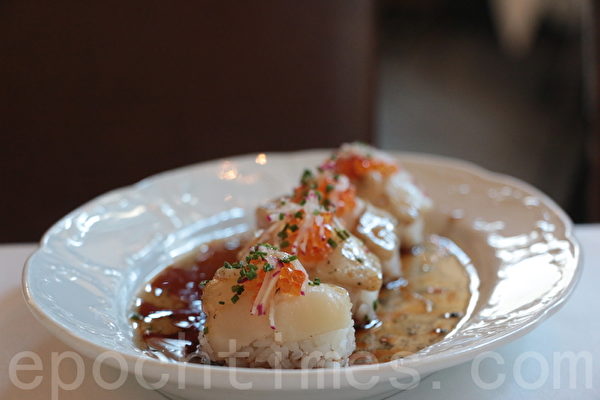In recent news from Epoch Times on August 26, 2024, it was reported that about a year ago, the ban imposed by the Chinese Communist Party (CCP) on Japanese seafood led to a slump in scallop prices. However, the scallop prices in Japan are now on the rise due to increased domestic consumption and a significant surge in exports to markets in North America and Southeast Asia, with exports to the United States growing by 64%.
Back in August 2023, following the incident of the Fukushima nuclear power plant discharging water into the ocean, China began prohibiting the import of seafood products from Japan, causing wholesale prices of scallops to plummet by 20-30%. Scallops are a major product of Japan, where China used to be the largest destination, accounting for half of the total exports.
According to a report from Nikkei Asian Review on August 25, the demand for frozen scallops, known as “tama-gai” in the Tsukiji market in Tokyo, is currently high. These shellfish are used in sushi, tempura, Chinese dishes, and other cuisines.
The scarcity in scallop supply is intensifying, and it is estimated that prices will exceed those before the CCP ban.
One seafood wholesaler in Tsukiji mentioned that by mid-August, the wholesale price of frozen scallops averaged between 3,200 and 3,300 Japanese yen per kilogram (approximately $22-23), marking an increase of around 30% compared to the same period last year.
In fish shops in Tokyo, the price of thawed raw scallop sashimi is between 498 and 598 Japanese yen per 100 grams, indicating a rise of 20-30%. Both of these prices have now returned to the levels seen before the ban by China.
The general manager of Tohto Suisan in Tokyo stated in the Nikkei report that due to strong overseas demand, scallop prices have been continuously skyrocketing.
Efforts to send Hokkaido scallops to Mexico for processing and then selling to the high-end market in the United States have officially commenced. A report from Nikkei in early August mentioned that as part of a survey conducted by the Japan External Trade Organization (JETRO) until March 16, 14 Japanese companies from 8 prefectures participated in inspecting the scallop shucking operations of three local companies in Ensenada, Baja California, in northwest Mexico.
JETRO revealed that there are approximately 5,000 Japanese restaurants in California (in 2022), ranking it as the largest in scale nationwide, with an increase of over a thousand restaurants since 2010. As scallops are becoming increasingly popular as a sushi ingredient, the demand for high-quality scallops is also robust.
In the first half of 2024, Japan’s scallop exports decreased by 37% year-on-year to 24.1 billion Japanese yen. Although the impact of the CCP ban has not been completely eliminated, exports to other markets are expanding.
Exports to the United States have grown by 64%, while those to Canada have surged by 7.2 times. Exports to Thailand have increased by 3.5 times. Vietnam, which is closely watched as a processing center, saw its exports grow by 7.9 times.
Following the start of the spring harvest season, the yen to dollar exchange rate dropped to around 160, boosting exports. A scallop exporter from Hokkaido mentioned, “I never expected such a significant increase in exports to North America.”
The Chairman of the Japan External Trade Organization, Hidehiko Ishiguro, stated, “Given the sharp growth in alternative markets, they will soon partially offset the decline in the Chinese market. There is also great potential for further growth.”
It is currently unclear whether Beijing will lift the trade restrictions. However, Hiroshi Ishiguro stated, “Even if China resumes imports, we cannot fully return to our previous commercial distribution.”
In Japan, an executive from Tohto Suisan mentioned that as consumers recognize the deliciousness and ease of cooking scallops, interest in scallops continues to grow. “Currently, I don’t see any catalyst for lowering prices.”
Moreover, Japan’s “Hometown Tax” website and conveyor belt sushi restaurants have launched promotional activities. The Ministry of Agriculture, Forestry, and Fisheries in Japan has called on consumers to “eat five scallops per person.” According to the household income and expenditure survey by the Ministry of Internal Affairs and Communications, the average scallop consumption per household in Japan from September to December 2023 increased by 1.3 times compared to the same period the previous year, with expenditure increasing by 1.5 times.

